Lake District sketchbook took modern-day monk five years
- Published
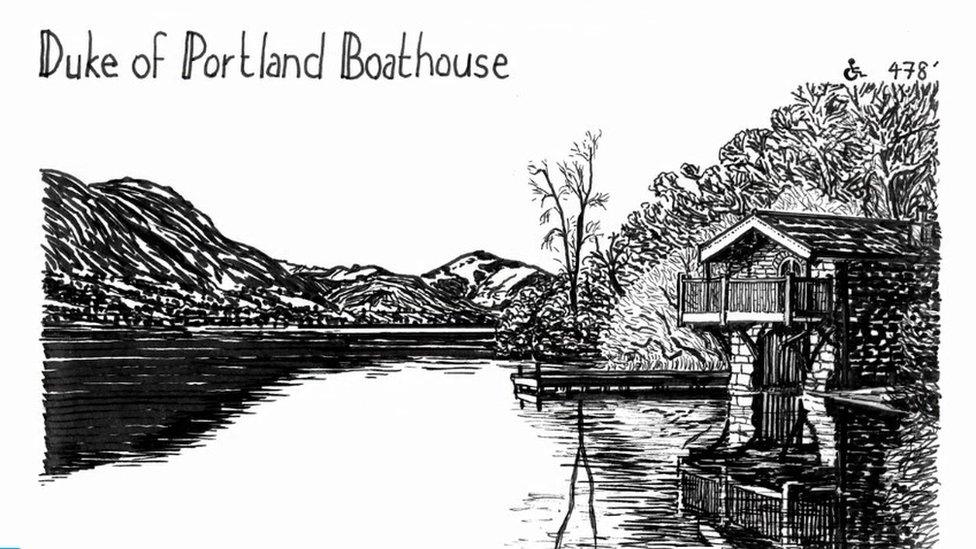
Sketchbook author Colin Hindle wants tourists to return to the Lake District but "only when it is safe"
Tea shop owner Colin Hindle spent five years roaming beauty spots to create a 180-page "wow factor" sketch and history book of the Lake District.
Known locally as the "modern-day monk" he was inspired by guidebook writer Alfred Wainwright.
Over the last year he has had time to spend on his labour of love because, despite being allowed to open for takeaways, he kept his business shut.
He said: "I want people to come to the Lakes, but only when it is safe."
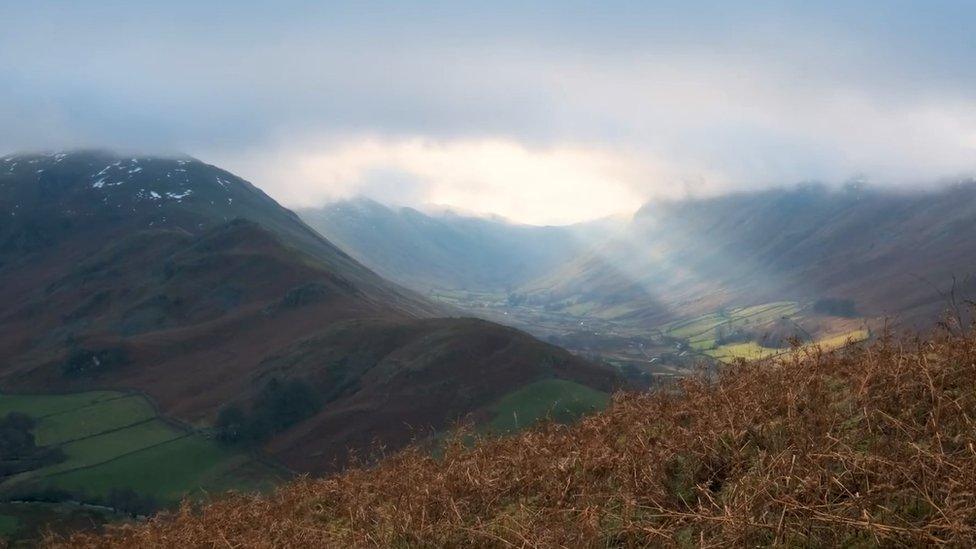
"The views from Hallin fell are sensational and never disappoint", Colin Hindle says
In 2015 Mr Hindle decided to walk the 214 Wainwright walks in one year with a friend to fund raise for a cancer charity.
He said: "On reaching many of the summits I felt some sense of deflation - there was no view, or a compromised view, or it was better earlier or later on the walk.
"So many walkers are left disappointed if they reach the top of a summit and the view is misted over or it is cloudy."
It was then that he got the idea for his solo venture, seeking out lesser-known views, capturing them at their best and telling a little of their history.
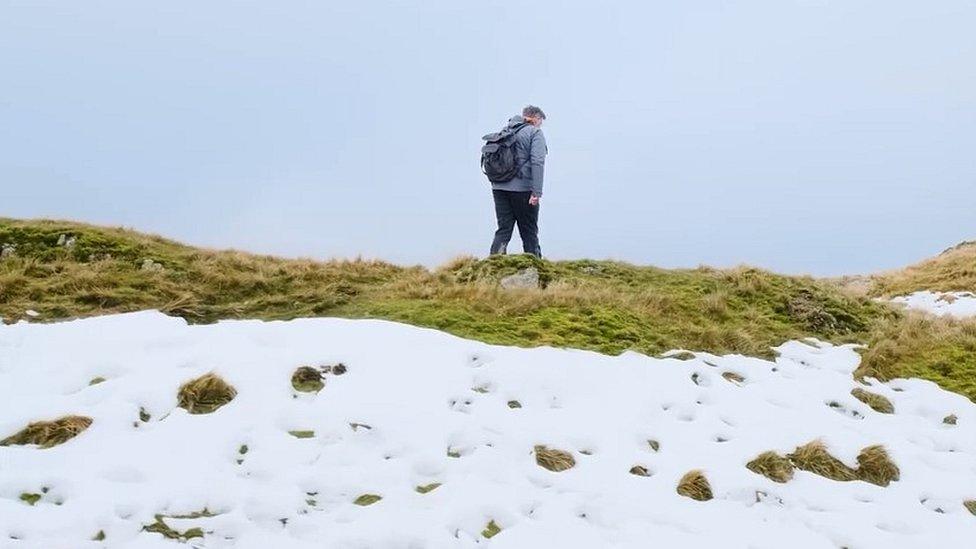
Mr Hindle believes he has walked, driven and rambled roughly 2,070 sq kms (800 sq miles)
However, he stressed he was not trying to compete with the work of Wainwright and his book is a "companion" to the "epic" man's global bestsellers.
"Wainwrights guides are unsurpassable in describing how to get up and down the fells," explains Mr Hindle.
"Mine showcases the best views from and of the fells and where they are, while interweaving the history of how the landscape has come to be as it is.
"I want visitors to have a picture so they can see the views at their best, even if they aren't clear on their visit."
He believes he has walked, driven and rambled roughly 2070 sq kms (800 sq miles) looking for the best vantage points, armed with his sketchbook, flask, and packed lunch.
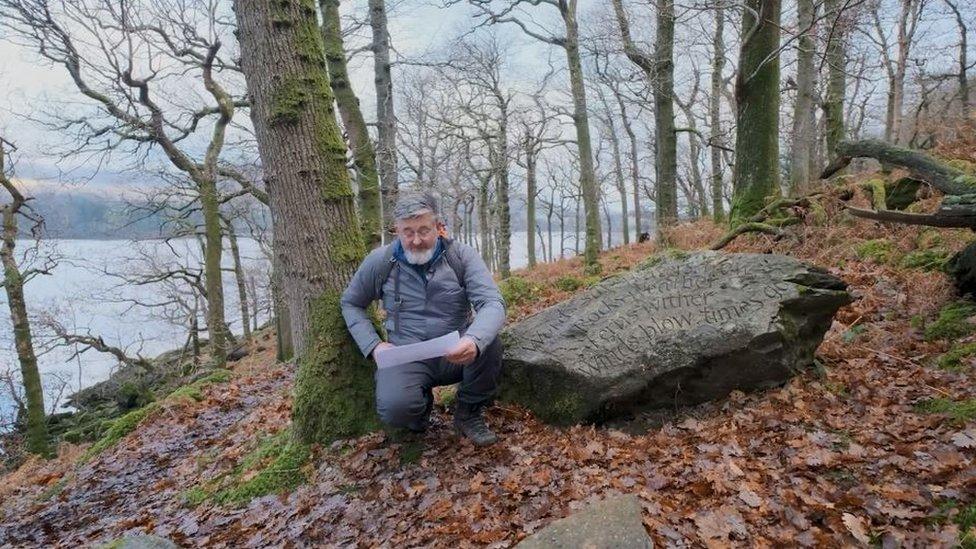
One of his favourite stops is Hallinhag Wood in Martindale

The woods in Martindale inspired the poet Kathleen Raine
Mr Hindle said many visitors are drawn to the Lakes by the splendour of the mountain ranges of Scafell and Helvellyn.
But he said the best views are not just from the fells and mountains, but on the lake shores, footpaths and woodland.
One of his favourite stops is Hallinhag Wood in Martindale, which inspired the poetry of Kathleen Raine who moved there in 1940s with her children to escape the Blitz.
Raine, who described Martindale as "an experience in solitude but never loneliness", was awarded the Queen's Gold Medal for Poetry.
Lines from her poems were engraved on stones in the woods in 2017.
One of Mr Hindle's other favourite destinations is Hallin Fell, which he calls the "plucky" little fell that "resisted" being hollowed out by four different glaciers.
He said it is a family-friendly fell which takes 10 minutes to walk up and offers views of so many valleys from one vantage point.
"It stands at 1271ft tall and it's been formed by resisting four different glaciers; two of the glaciers scooped out the valleys of Martindale and Boredale.
"The views from Hallin are sensational and never disappoint."

"Plucky" little Hallin fell that "resisted" being hollowed out by four different glaciers
The central tranche of the mountain ranges of Scafell and Helvellyn were formed 250m years ago by a super volcano.
Over time the landscape has been shaped by repeated glaciers and ice ages to form what Mr Hindle describes as the "most achingly beautiful 800 square miles in the world."
He added: "Man's played his part from 10,000 years ago in the Langdale Valley, they discovered that the green stone could be fashioned into axes to cut down trees and make way for agriculture to start.
"Ever since, the Romans, the Vikings, farmers, mining, tourism, the industrial revolution and the conservation movement have all played their part in making this wonderful landscape.
"You can really feel the presence of those who have gone before."
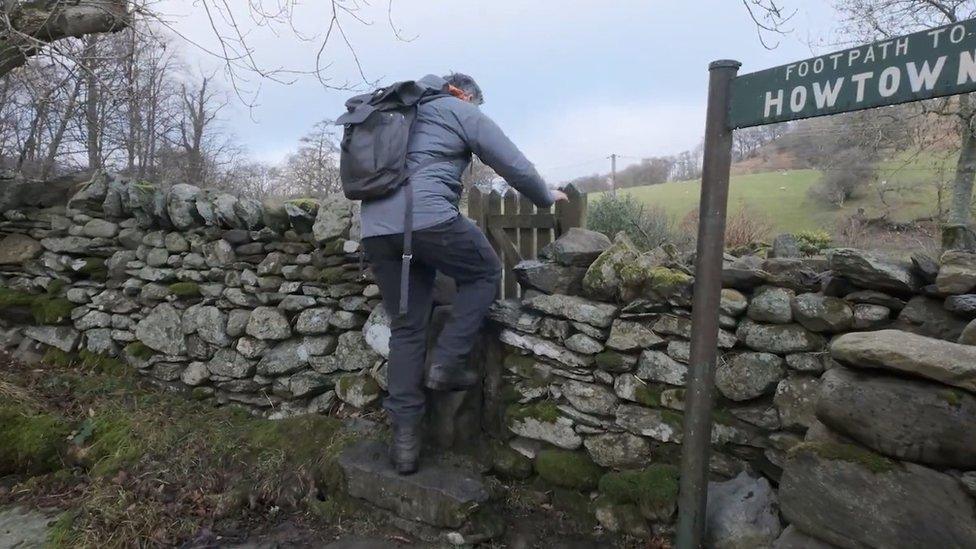
Mr Hindle said the Lakes are the "most achingly beautiful 800 square miles in the world"
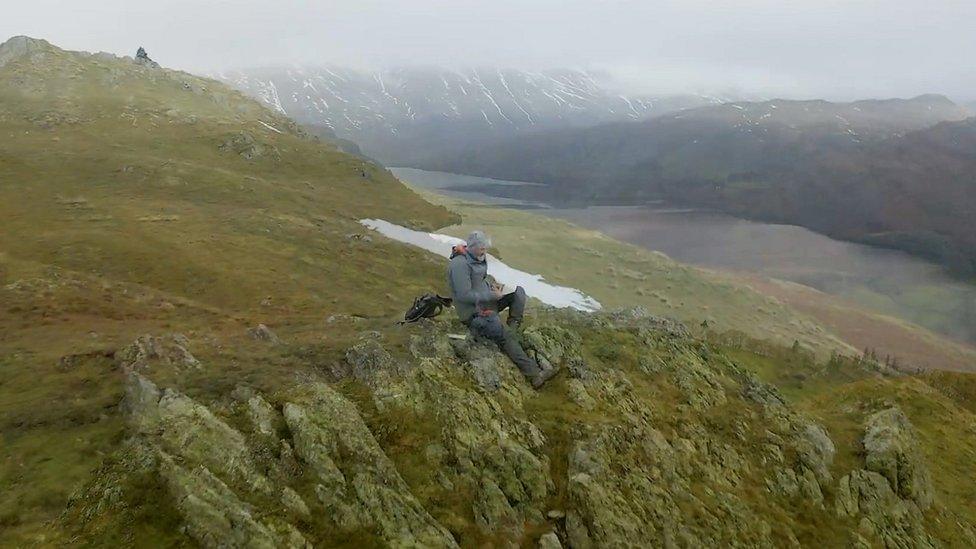
Mr Hindle wants tourist to have a picture of the best views in case they are not clear during their visit
Mr Hindle sent a copy of his book to Wainwright's biographer Hunter Davies and was delighted when he wrote back saying: "The most artistic and best illustrated guide to Lakeland since the Blessed Wainwright hung up his pen."
- Published17 December 2016
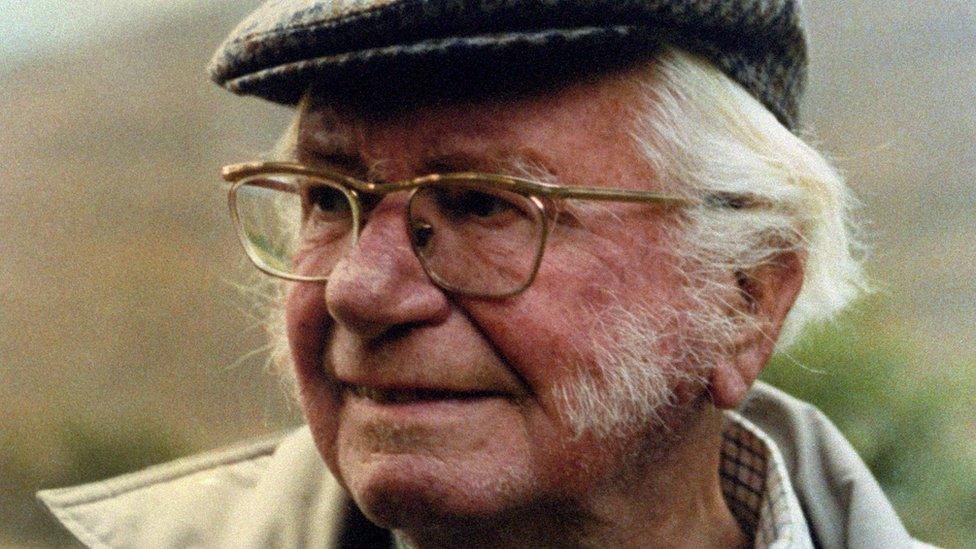
- Published25 June 2012
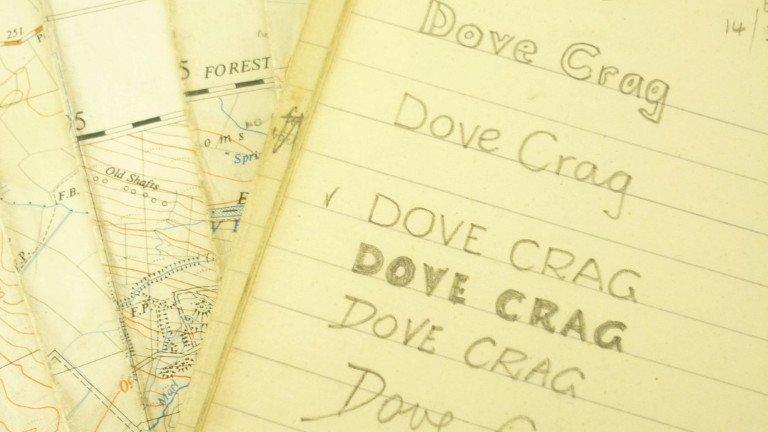
- Published13 May 2013
